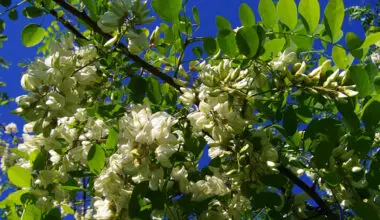A prodigious flowering to wish: it is the main asset of the fuchsia which, in the shade, unceasingly deploys hanging bells, from the summer until the frosts, and even all the year in a veranda out of frost.
Fuchsia prefers shady situations, because it “toasts” in a location that is too warm and sunny. Planted in pots or in the open ground, it is at the foot of a wall to the north that it is best enjoyed and shows the most floriferous. Make sure that the soil is rich and fresh enough.
Contents
Pot culture of fuchsia
Fuchsia in spring and summer
The interest of the pot is to be able to put it anywhere, on a terrace or a balcony.
But the soil also dries out much faster in pots than in soil, so it is advisable to water regularly, especially in summer.
They like light sunshine but appreciate shade in summer when temperatures are high.
Fuchsia in autumn and winter
The same advice applies as for outdoor cultivation.
Fuchsias are hardy only south of the Loire River and will need protection in all areas where temperatures drop permanently below 32°F.
In winter, the pots provide even less protection for the roots from cold and frost, so it is advisable to bring them into a cool, sheltered place during the winter.
How to plant fuchsia in a pot?
Make a mixture of two-thirds organic enriched potting soil and one-third heather soil. Drain the bottom of the pots with gravel.
Maintenance of fuchsia in pot
Watering of fuchsia in pot
Water very regularly from spring to fall to prevent the substrate from drying out, but not excessively to prevent root rot. In winter, reduce the frequency of watering.
Fertilization in pots
Apply an organic fertilizer that is soluble in the irrigation water every month during the growing season.
Potted winter protection
Put the pots in a veranda kept frost-free. In a cold greenhouse, wrap the pots with several layers of winterizing veil. The pruning will take place in spring, before the vegetation resumes.
How to winterize a potted fuchsia?
There are more than 10,000 varieties of fuchsias, some of which are hardy and can be planted in the garden. For the others, it is necessary to bring them into a room sheltered from the cold because they are frosty.
Which room to overwinter a potted fuchsia ?
The room must be well ventilated and frost-free. A temperature between 46 and 53°F is ideal. If the room is not very bright (for example a garage with a window), this does not pose a major problem since the dormant plant will not produce leaves or flowers.
How to maintain a fuchsia during the winter?
Water only when the substrate is almost completely dry and never leave water in the cups. Watch out for the possible appearance of parasites that tend to develop under cover. If a plant is affected, treat it with nettle liquid manure and put it in quarantine. Treat other overwintered plants as a preventive measure.
In the spring, repot the plant in a mixture of potting soil and ripe compost. Gradually resume watering and take out your fuchsias as soon as there is no risk of frost in the shade of a large tree. Start fertilizing again every day.
Pruning the fuchsia in pot
If possible, remove faded fuchsia flowers as you go along. Fold down the stems in late fall (cold regions) or spring (mild regions), by one third or two thirds depending on the region.
In a veranda or indoors, pruning the fuchsia helps to aerate the antlers and encourage the growth of young flowering stems. Prune after the end of flowering.
Multiply the fuchsia in pot
Propagation by cuttings of mature stems (in the last two weeks of August) gives good results with a high recovery rate. It is also the fastest method. Remove stem sections from the ends of twigs that do not have flower buds or flowers.
Attacks and diseases of fuchsia in pots
Various pests such as aphids, mealybugs, mites and leafhoppers can attack fuchsias outdoors or indoors when growing conditions are not ideal, or during climatic hazards.
How to react against diseases?
Diseases: rust, fumagine, botrytis.
Prevention
- Do not leave water in the cups of potted plants.
- Cut and burn all diseased parts.
- Clean the ground at the feet of the plants.
- Watch for the appearance of parasites (aphids, mites…) vectors of diseases.
- Spray liquid manure from plants with antifungal properties such as garlic, nettle or horsetail.
Healing
- As soon as the first symptoms appear, cut and burn the affected areas.
- Water the plant with horsetail manure.
- Spray a garlic decoction or horsetail manure on all aerial parts of the plant.
Summary
Fuchsia is native to South America and New Zealand where it is hardy in mild regions. Under our climates, this attractive plant by its spectacular bloom does not resist the strong winter frosts.
This is the reason why the fuchsia is a plant often proposed for the culture in pot, to return in winter without frost.
3 tips to succeed with Fuchsias in pots
– Drain the bottom of the containers well with a layer of expanded clay balls or pottery shards. Fuchsias appreciate regular watering but not excess water.
– A geranium-type potting soil is suitable, although a mixture of 1/3 garden (or vegetal) soil and 2/3 potting soil is preferable.
– Regular watering without excess favours the continuity of growth and flowering. Remember to add a “Geranium” type fertilizer to the irrigation water at the dosage indicated on the packaging.









